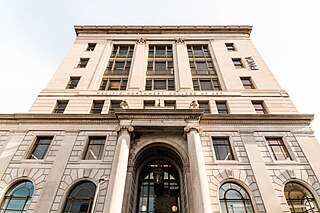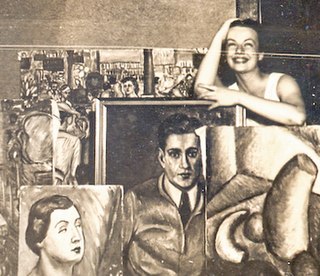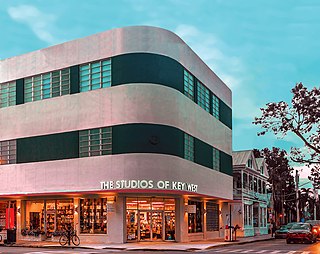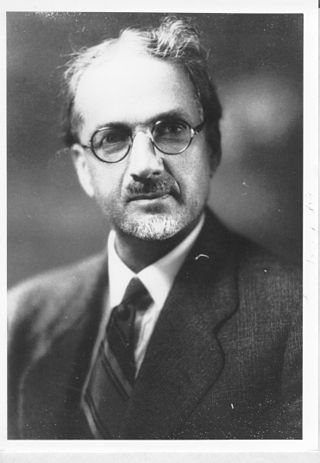
Art colonies are organic congregations of artists in towns, villages and rural areas, who are often drawn to areas of natural beauty, the prior existence of other artists, art schools there, or a lower cost of living. They are typically mission-driven planned communities, which administer a formal process for awarding artist residencies. A typical mission might include providing artists with the time, space, and support to create, fostering community among artists, and providing arts education, including lectures and workshops.
An oxbow is part of oxen tack: a u-shaped collar, the upper parts of which are fastened to a yoke.

The Pacific Northwest College of Art (PNCA) is an art school of Willamette University and is located in Portland, Oregon. Established in 1909, the art school grants Bachelor of Fine Arts degrees and graduate degrees including the Master of Fine Arts (MFA) and Master of Arts (MA) degrees. It has an enrollment of about 500 students. The college merged with Willamette University in 2021.

Eleanor Coen was an American painter.

The Carnegie Mellon School of Art at Carnegie Mellon University in Pittsburgh, Pennsylvania is a degree-granting institution and a division of the Carnegie Mellon College of Fine Arts. The School of Art was preceded by the School of Applied Design, founded in 1906. In 1967, the School of Art separated from the School of Design and became devoted to visual fine arts.

The New York Studio School of Drawing, Painting and Sculpture at 8 West 8th Street, in Greenwich Village, Manhattan, New York City, New York State is an art school formed in 1963 by a group of students and their teacher, Mercedes Matter, all of whom had become disenchanted with the fragmented nature of art instruction inside traditional art programs and universities. Today it occupies the building that previously housed the Whitney Museum of American Art.

The Kalamazoo Institute of Arts (KIA) is a non-profit art museum and school in downtown Kalamazoo, Michigan, United States.

The Fabric Workshop and Museum, located in Philadelphia, Pennsylvania, is a non-profit arts organization devoted to creating new work in new materials and new media in collaboration with emerging, nationally, and internationally recognized artists.

The Studios of Key West is a center for the arts in Key West, an island community at the southernmost tip of the Florida Keys. Established in 2006 as a nonprofit cultural organization, The Studios works to promote multidisciplinary arts, to provide artist-in-residency opportunities for artists worldwide, and to maintain long-term studio spaces dedicated to Florida Keys artists. The organization publishes a yearly catalog of activities and maintains an extensive website at TSKW.org.
The Dell'Arte International School of Physical Theatre is a private school in Blue Lake, California. It offers summer workshops, and a study abroad program in Bali. The school also has a professional company in residence, the Dell'Arte Company.

Albert Henry Krehbiel, was the most decorated American painter ever at the French Academy, winning the Prix De Rome, four gold medals and five cash prizes. He was born in Denmark, Iowa and taught, lived and worked for many years in Chicago. His masterpiece is the programme of eleven decorative wall and two ceiling paintings / murals for the Supreme and Appellate Court Rooms in Springfield, Illinois (1907–1911). Although educated as a realist in Paris, which is reflected in his neoclassical mural works, he is most famously known as an American Impressionist. Later in his career, Krehbiel experimented in a more modernist manner.

The Ottawa School of Art is a non-profit art school in downtown Ottawa, Ontario, Canada. The school offers a one-year certificate program, a three-year diploma program, art camps, and general interest courses, as well as providing exhibition space and a boutique for the display and sale of artwork by local artists and students. The school facilities include a ceramics studio, sculpture studio, wood shop, printmaking studio, a dark room for photography, painting studios, and multipurpose studio spaces where life drawing classes take place.

The Indianapolis Art Center is an art center located in Indianapolis, Indiana, United States. The center, founded in 1934 by the Works Project Administration during the Great Depression as the Indianapolis Art League, is located along the White River. It features fine art exhibitions, art classes and studios, a library with over 5,000 titles, and the ARTSPARK nature and art parks. As of 2008 the Indianapolis Art Center featured over 50 annual exhibitions and had over 3,000 members.

The Museum of Contemporary Art Arlington is a non-collecting contemporary art museum and visual arts center in the Virginia Square neighborhood of Arlington County, Virginia, established in 1974.

The Utah Museum of Contemporary Art (UMOCA), formerly known as the Salt Lake Art Center, is a contemporary art museum located in downtown Salt Lake City. The museum presents rotating exhibitions by local, national, and international contemporary artists throughout its six gallery spaces.
Western Michigan University Homer Stryker M.D. School of Medicine (WMed) is a private medical school in Kalamazoo, Michigan. WMed was established in 2012 and confers the Doctor of Medicine (MD) degree, as well as Master of Science in Biomedical Sciences degree and the Master of Science in Medical Engineering degree. WMed is a collaboration between Western Michigan University and Kalamazoo's two teaching hospitals, Ascension Borgess and Bronson Healthcare. The inaugural class of 54 students started in August 2014.
New York Feminist Art Institute (NYFAI) was founded in 1979 by women artists, educators and professionals. NYFAI offered workshops and classes, held performances and exhibitions and special events that contributed to the political and cultural import of the women's movement at the time. The women's art school focused on self-development and discovery as well as art. Nancy Azara introduced "visual diaries" to artists to draw and paint images that arose from consciousness-raising classes and their personal lives. In the first half of the 1980s the school was named the Women's Center for Learning and it expanded its artistic and academic programs. Ceres Gallery was opened in 1985 after the school moved to TriBeCa and, like the school, it catered to women artists. NYFAI participated in protests to increase women's art shown at the Museum of Modern Art, The Whitney Museum of American Art and other museums. It held exhibitions and workshops and provided rental and studio space for women artists. Unable to secure sufficient funding to continue its operations, NYFAI closed in 1990. Ceres Gallery moved to SoHo and then to Chelsea and remained a gallery for women's art. However, a group continues to meet called (RE)PRESENT, a series of intergenerational dialogues at a NYC gallery to encourage discussion across generations about contemporary issues for women in the arts. It is open to all.
Shannon R. Stratton is a Canadian artist, writer and curator. She is currently executive director of Ox-Bow School of Art and Artists' Residency in Saugatuck, Michigan.
Anderson Ranch Arts Center is a non-profit arts organization founded in 1966 and located in Snowmass Village, Colorado. The center hosts an artist residency program and summer workshops in the months of June, July, August, September as well as January. The campus is five acres in size with working studio space in historic buildings for ceramics, painting, printmaking, drawing, photography, sculpture, furniture making and woodworking as well as a library, café, gallery, wood cabins and a lecture hall. The Ranch invites visiting artists, critics and curators year-round.

Dorothy Laverne Meredith was an American artist and educator. She was known for her fiber art and abstract watercolor paintings.














